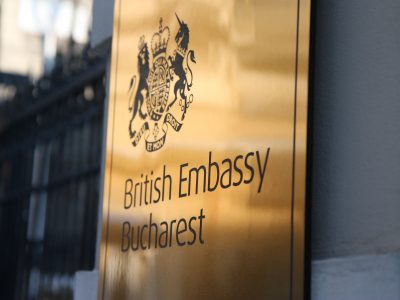A working collection
If the Government Art Collection was a person, its approach and way of working would be close to that of a diplomat or ambassador. Frequently on the move, working hard to make links between the UK and other countries, this collection of historic, modern and contemporary art champions British art and culture. It is seen by hundreds of thousands of people at government locations across six continents.
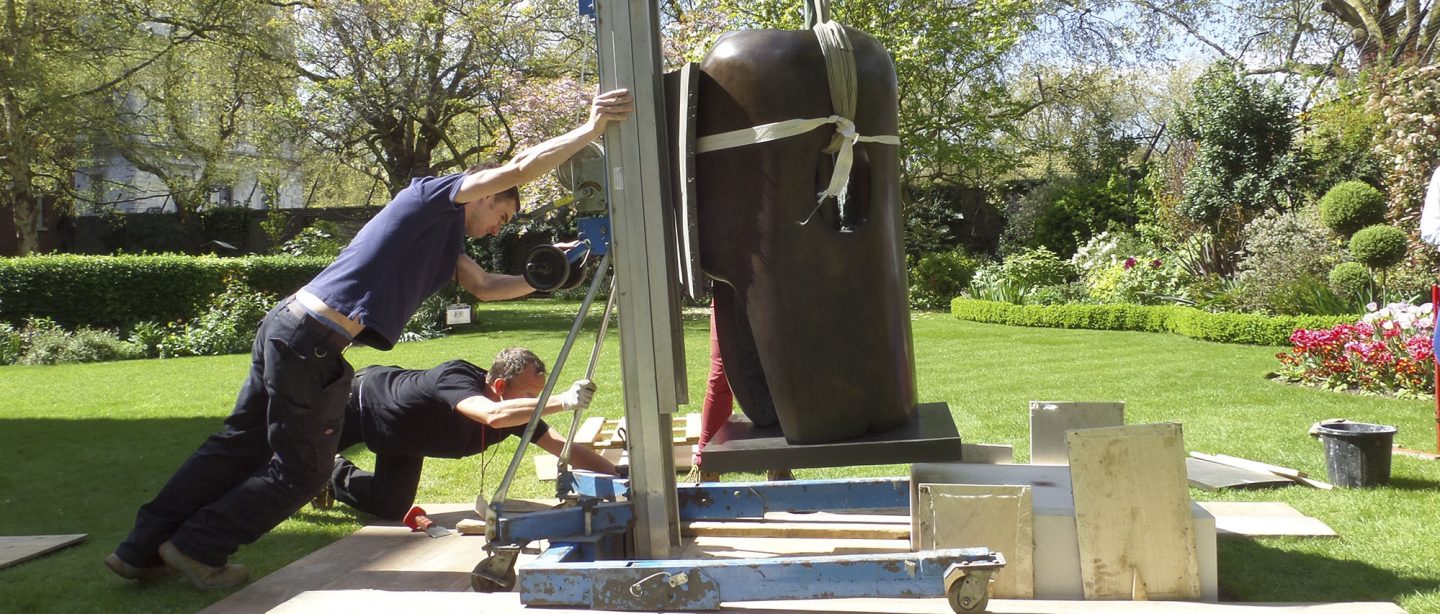
Installing Hollow Form with Inner Form a bronze sculpture by Barbara Hepworth in the garden of 10 Downing Street, London © Crown Copyright
Working around the world
The global flow of the Government Art Collection means that roughly two-thirds of its works are on show at any one time. Visitors engage with artworks at over 370 government buildings around the world, while the Collection frequently loans works for temporary exhibitions to museums and galleries in the UK and abroad. In the UK, works from the Collection have also been displayed in schools, libraries, shopping malls, sports venues and even a horse riding centre!
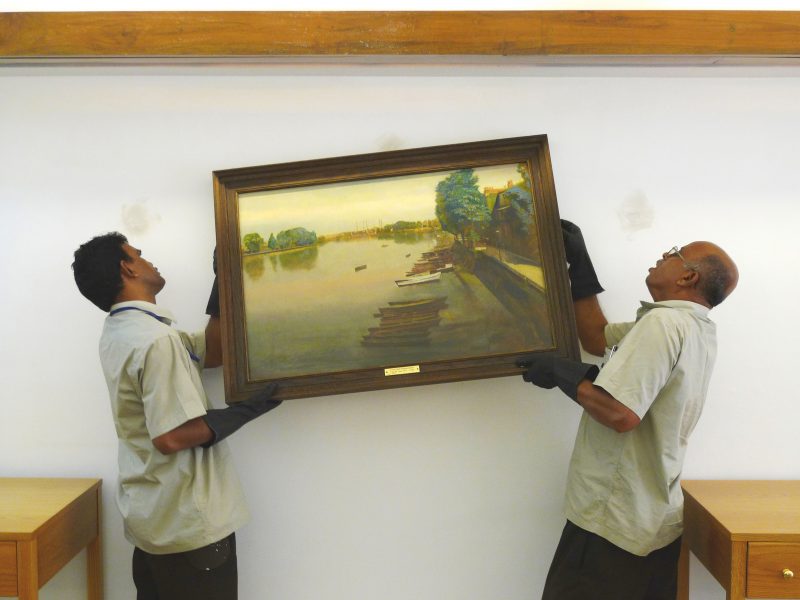
Art handling technicians hanging Lower Mall, Hammersmith a painting by Charles Sims in the Ambassador's residence, Dhaka, Bangladesh © Crown Copyright

Installing a portrait of King George V by Sir Samuel Luke Fildes (after) in the Foreign & Commonwealth Office, London © Crown Copyright
Not just a pretty picture
The Collection is in a unique position to make art available to a variety of audiences as an everyday encounter in a non-gallery environment. Our curatorial team strategically plan the selection and location of artworks, deciding where its display has the best impact in a space, both contextually and visually. Some of the questions they consider are: Who will be working near to it every day? Who visits the space? How can the artwork enhance or support the government or diplomatic activity that happens in that environment? What are the practical issues to do with care and maintenance of the work that local staff will need to be aware of?
When new ministers start or ambassadors come into post, we ask them for a steer on selecting works for their office or Residence, for instance, if a time period or genre of art interests them. We might also look at the policy areas that ministers are responsible for and identify related works. When David Gauke became Chief Secretary to the Treasury between 2016–2017, one of the works selected for his office was a 17th-century portrait of Richard Weston, 1st Earl of Portland (1577-1635) diplomat, Chancellor of the Exchequer, Lord High Treasurer, after Sir Anthony van Dyck.
When ambassadors set off for new diplomatic posts abroad, we look for artworks that might enhance the links between the UK and another country, or that represent excellent examples of British culture.
What our visitors don’t expect is that pride of place in the Victorian drawing room goes to Bridget Riley’s brilliant Reflection: a work that has a direct connection to Egypt, because its colours were inspired by a journey that the artist made to Upper Egypt.
British Ambassador Geoffrey Adams describing in 2019, visitors’ impressions of encountering Bridget Riley’s work at the Embassy in Cairo.

Bridget Riley’s Reflection in the British Ambassador’s Residence, Cairo © Crown Copyright
Once a display is agreed, our curators research the works, producing short texts that offer viewers different ways into the art. This encourages everyone working in, living in or visiting the building to engage with the works on display and helps the staff, ministers, ambassadors, facility managers and others, to share their knowledge with visitors. When they are able to talk about why particular artworks are on display, or how an artist is linked to the country in which their work is shown, they take on the role of informal ‘art ambassadors’, sparking public interest and helping create stimulating environments for the business of government.

George Gordon Noel Byron, 6th Baron Byron (1788-1824) poet by Thomas Phillips, oil on canvas
Artworks relate to locations in different ways. This might be through a direct link between a work and a well-known historical figure such as Lord Byron whose striking portrait by Thomas Phillips has been on display almost continuously in the British Residence in Athens.
My absolute favourite must be the 1813 portrait of the great philhellene and poet, Lord Byron, by Thomas Phillips RA which has pride of place in the Ballroom. Byron is a national hero of the Greek War of Independence and is revered in Greece for his contribution to the country’s liberation from the Ottoman yoke, as no other foreigner is. There are statues of him in many parts of Greece, and Byron is a common boy’s name, a suburb of Athens, a school and a football team! His image is instantly recognisable to our visitors when they look up at this magnificent portrait of him in his Suliot costume. The fact that we have the original in the Residence is a cause of great excitement for all Greek visitors – who invariably ask to be photographed in front of the painting. A wonderful reminder of a point in Greek history where Britain played a decisive, positive and inspirational role.
The British Ambassador to Greece, Kate Smith, commenting in 2019 on the portrait of Lord Byron at the Embassy in Athens.
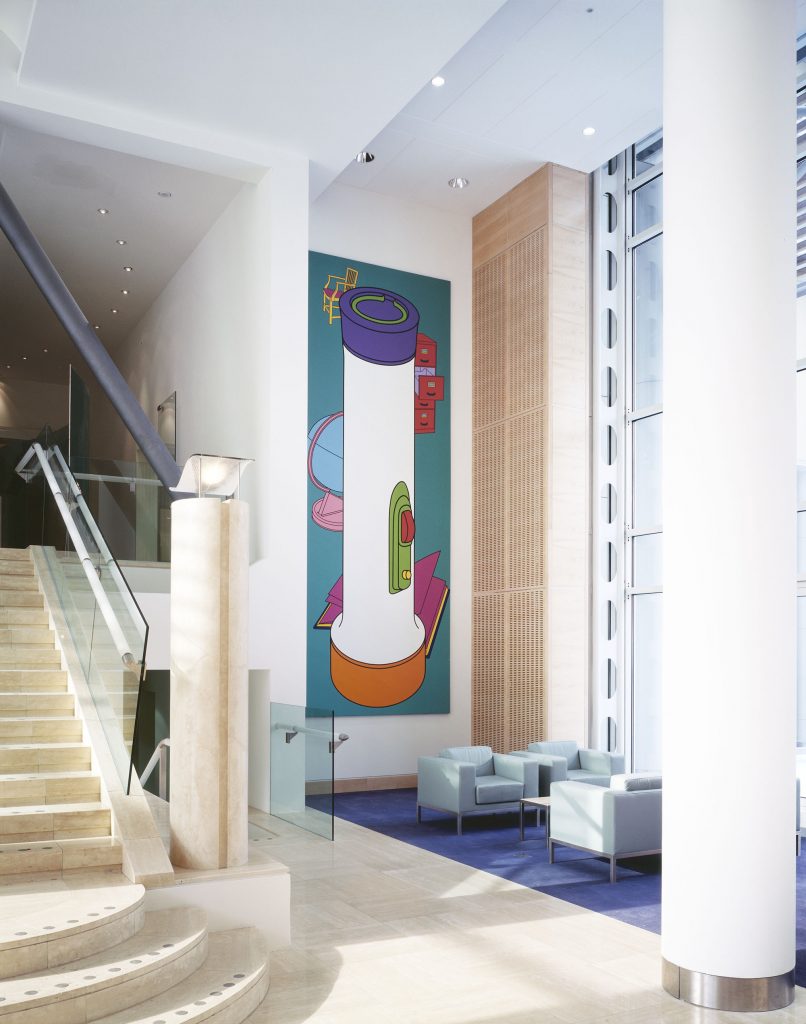
Lighthouse by Michael Craig-Martin on display in the British Embassy, Moscow © Crown Copyright
Often, an artwork we place might have an architectural resonance with the space. A good example is Lighthouse, a monumental painting by Michael Craig-Martin of over five metres high that greets visitors to the entrance hall of the British Embassy in Moscow. This work was one of three works commissioned by the Government Art Collection on behalf of the Foreign and Commonwealth Office in 1999 for the new embassy.
Very occasionally, artworks hold a specific personal resonance to a minister or ambassador as they come into their new role. In 2003, Estelle Morris, the Labour MP (today Baroness Morris of Yardley) was appointed Minister of Arts. Having grown up in Greater Manchester, she was keen to discover if the Government Art Collection could provide an industrial landscape painting by Manchester-born artist L.S. Lowry for her new ministerial office. Shortly afterwards, Lowry’s 1946 painting, Lancashire Fair, Good Friday, Daisy Nook became available.
And what’s special about that, that’s Daisy Nook Fair, Easter Fair, and it’s about a mile from where I was born. It’s where my mum and dad used to do a bit of their courting when they were young and Daisy Nook Easter Fair is one of those phrases from my youth. To have an original Lowry on the wall is one thing, to have a Lowry that relates to somewhere where you were actually born and brought up, I think people can imagine how special that is.
Estelle Morris talking about the work in 2005 to BBC journalist, Mark Whittaker.
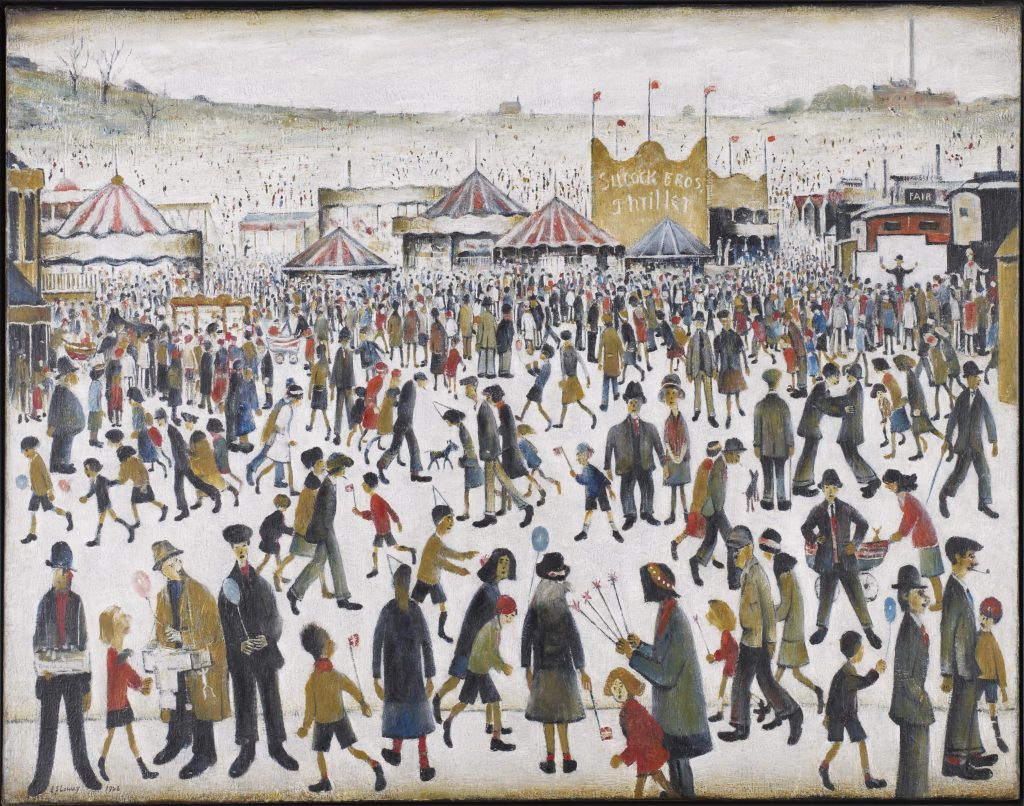
Laurence Stephen Lowry, Lancashire Fair, Good Friday, Daisy Nook, 1946 © The Estate of L.S. Lowry. All rights reserved, DACS 2022.
Making a first impression
A painting or sculpture displayed in an entrance makes that important first impression to the many visitors who walk through the door of a government or embassy building. Artworks can also spark conversations between ambassadors and ministers and their visitors, helping them find common ground, or offering a starting point to help smooth over potentially challenging conversations. In any situation or space, art can trigger emotions or responses which in these particular official buildings, can be pivotal in influencing people and situations.
Art that connects us
Often art can be a reminder of our common human experiences. The right artworks, sensitively placed, can help connect a variety of visitors with history, with ideas and with alternative points of view.
A coherent display of works from the collection can help visitors to UK government buildings abroad, gain a sense of Britain through their surroundings. Sometimes a particular government building or working environment, such as a key embassy building overseas or Number 10 Downing Street at home, presents a high profile and influential place to promote British art and culture to the world.
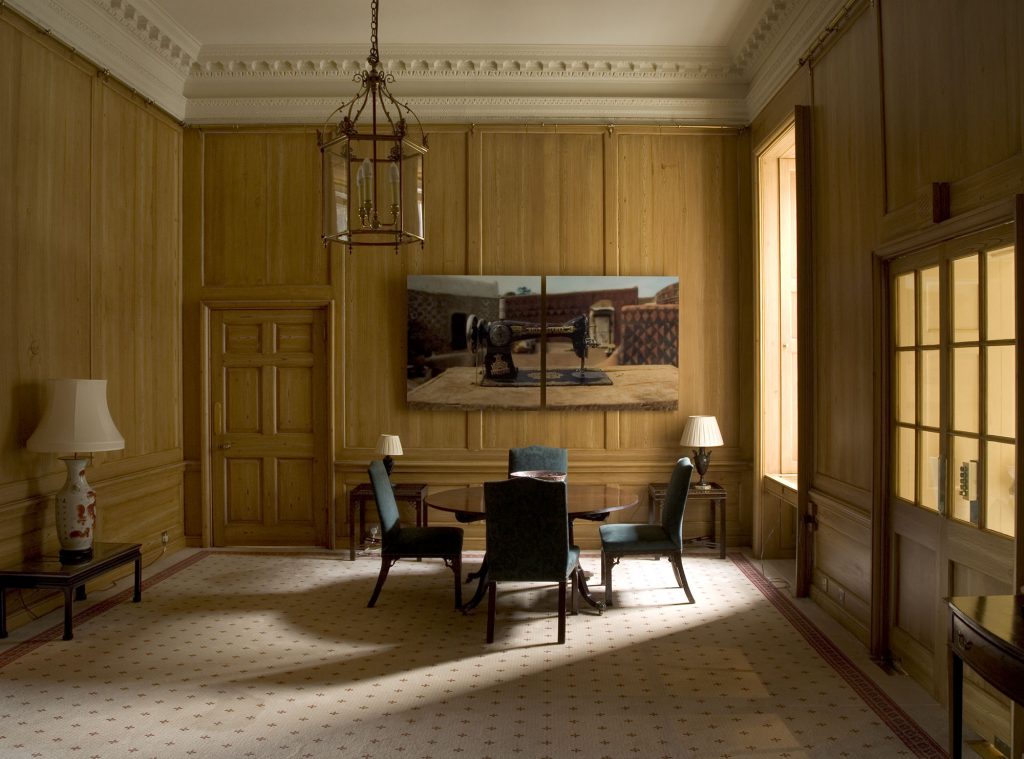
Fantôme Créole Series (Papillon no. 1) a diptych by Isaac Julien on display in 10 Downing Street © Crown Copyright
A collection on the move
Works from the Collection are displayed in hundreds of buildings in nearly every capital city across the world and although many stay in the same location for a number of years we also have a great number of artworks on the move.
Our collections staff move a few thousand artworks each year – some need to return to the UK for conservation work, others might be on their way to a new building or embassy as part of a refresh of the art on display and some might be going on loan to a museum or gallery.
The logistics and organisation of these moves, as well as the conservation required to maintain all the works in their various locations, form a significant part of the Collection’s operation.

Collection staff checking and preparing to move works of art © Crown Copyright

